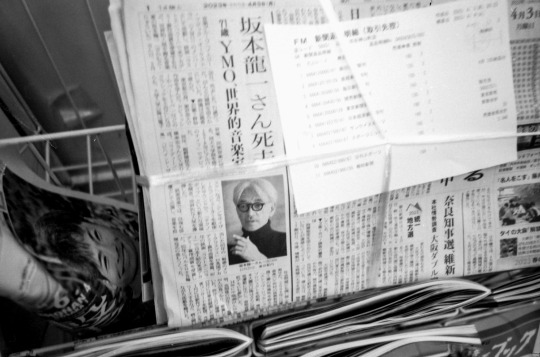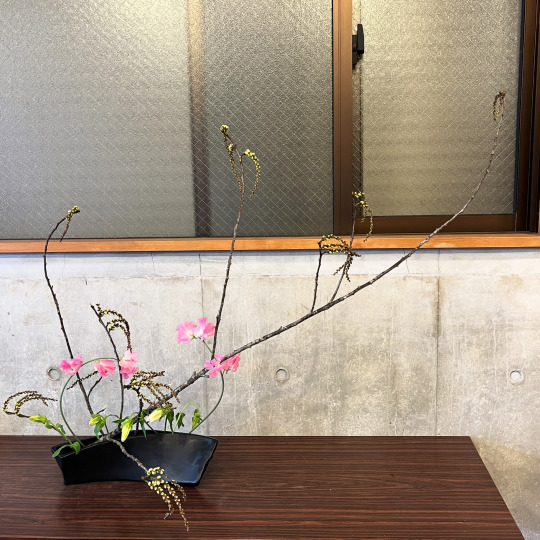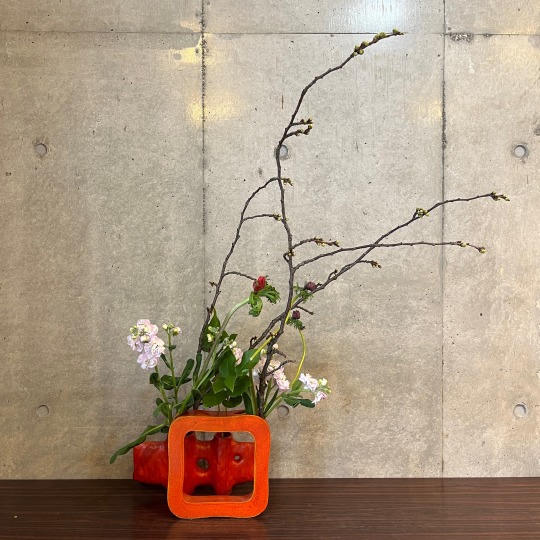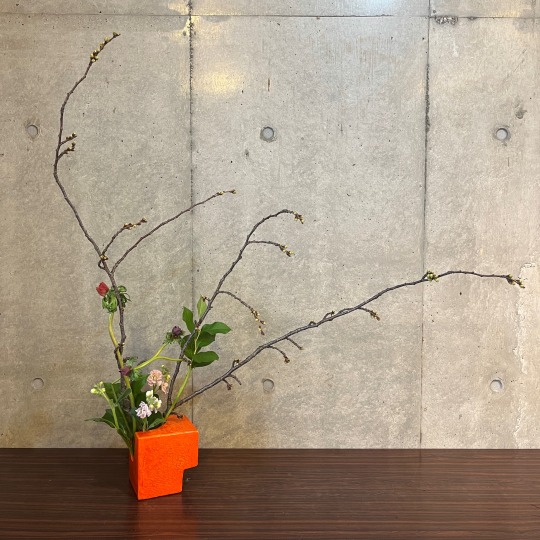Text
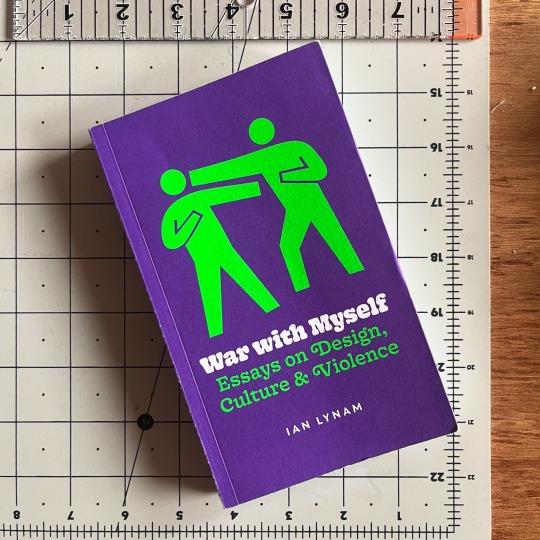
#finishedbooks War with Myself by Ian Lynam. Aye Ian's latest book is out, such an insane output. They are deceptively long reads something I think just seeing the book on social media doesn't fully show. There are approximately 17 essays beginning appropriately with "Why Write?.” Which is the very same reason why I write these reviews, to simply get these ideas out of my head and organize them out into perhaps ambitious terminology for myself but critical form. Also, I simply just forget if I don’t write it out, but more so simply to learn better through writing things out. This really becomes the theme for the book for me. A lot of these topics in the book he has covered before but with the book here he gives complete contexts...sometimes almost to the point where I get lost in the fascinating contexts. When he finally gets back to the point I will have happily and completely forgotten it lost in all the history he provides. The complete Mingei context relating it to Muji design there after was very informative where I feel I got bits but never a complete context that was very revealing the conclusions he draws in regards to the marketed nationalism and revealingly pretentious way we consume them. I like his essay on the post George Floyd induced decolonization of design. I have seen these books popping up and you can see them in some past reviews that has been a fun read-questioning for me in again the context of design history going away from the academic Eurocentricity. Which is also really dope because Ian essentially is an academic but unlike the connotation is constantly questioning it, which i just love. But in the article he questions the catch phrases "creativity" and creativity’s idiot cousin "innovation" haha. The problem he points is in its vague use while hinting to moral and virtuous good. An unmanned drone is innovation. For me with Apple, Tesla, and all these other "innovative" companies that everyone worships... as long as they are dependent upon those unnamed African and South American workforces then what has really been innovated? It is all suppose to move us forward instead it remains an analog racist exploitation. So when I always hear it design terms etc I whence with this in mind and glad I found it in the context of his decolonization of design essay. Plenty of gems in this book, seriously DM him for a copy.
0 notes
Text



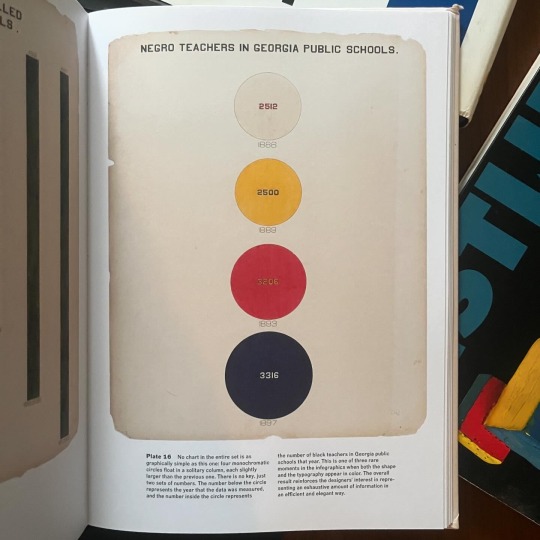

#finishedbooks Visualizing Black America by W.E.B. Du Bois. Was really excited when I heard about this from the previously reviewed book, Centered Diversifying Design where pioneering African designer Saki Madndikwa mused on how many even knew about DuBois graphic design work. Iainteventknowit. So here we are, Du Bois offers a narrative of what would now be called data visualization that is the rendering of information in a visual format to help communicate data while also generating new patterns and knowledge through the act of visualization itself... literally fitting in line perfectly with his famous quote, "The problem of the twentieth century is the problem of the color-line." The striking aesthetics and forms of the infographics, visually, are central to Du Bois's thought of black invisibility and his term double consciousness he used to describe the experience of always seeing oneself through the eyes of another, a psychic alienation and social isolation produced by the peculiar position of being black in America. It then becomes a second sight that could be transferred from a negative to a positive offering a unique perspective on existence itself. With that though...the aesthetics! The book is comprised of two sets of infographics one from 1900 at the Exposition Universelle in Paris and the second was with Atlanta University titled, "A Series of Statistical Charts Illustrating the Condition of the Descendants of Former African Slaves Now in Residence in the United States of America." Quite a mouthful. What is important is the date as Du Bois was a decade before the rise of dominant European avant-garde movements predating modular design elements having various origins in Russian constructivism, De Stijl, and Italian futurism; and twenty years before Bauhaus making clear use of primary colors built upon circles, triangles, and squares. But the application of charts that by then had been around for a 100 years, believe it was a Scottish statistician who created bar and pie charts and later much more famously Florance Nightingale who first linked data visualization to social action some 40 years prior that would could make the argument a PhD like Du Bois would have come across. But beyond all of this his infographics are a real unique experience made in ink, gouache watercolor, graphite, and photographic prints that I see informing my next set of collage work... always better to show than say.
2 notes
·
View notes
Text
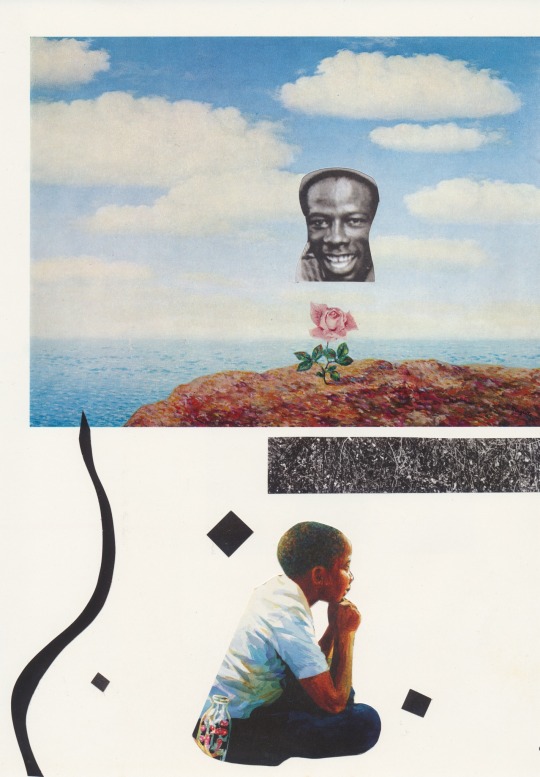
+collage on paper, 2019
"Day Dreaming"210mm x 297mm.
*Available, DM.
0 notes
Text

#finishedbooks The End of America by Naomi Wolf. This methodically looks at the history of fascism and its implementation by dictators from Mussolini through to the US backed Junta governments that sprinkled South America under Cold War policies. She draws these allusions to the then Bush Administration and everything following the Patriot Act leading to what became the Obama administration. Despite its age, and though to be fair it hasn’t aged badly l. One can’t help but conjure up the Trump administration who implemented the majority of these tactics that were clear as a day to me, but that’s the danger of democracy…it’s fragility. And despite, well a lot lol, this whole really basic yet rarely done tactic of…learning from history was percisely how the country was founded as the founders read passionately about fledging democracies of the past (albeit while raping their slaves). Although not self sustaining, they knew the delicacy of the interdependent executive, legislative, and judiciary branches mechanism was only as reliable as the character of the who people who were protecting or abandoning it. They saw all people as corruptible and so set up the system to keep anyone from having unconfined power. Again a bit of a dated read, the ten lessons she lays out drawing from history are as relevant as ever.
1 note
·
View note
Text

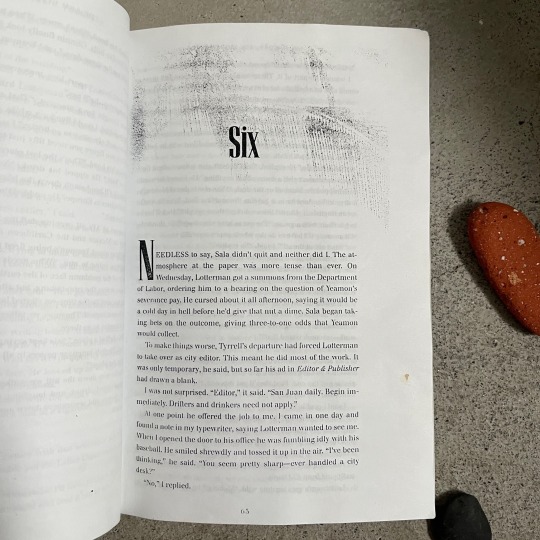
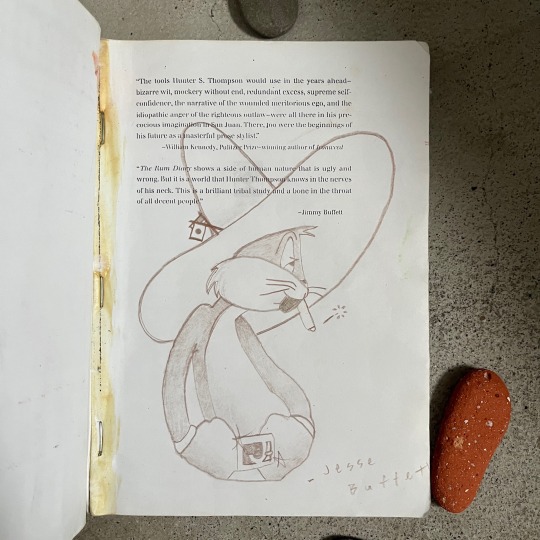
#finishedbooks The Rum Diary by Hunter S. Thompson. Read this a long time ago in 2008 when an English teacher friend lent it to me and said it would be a fast fun read. As a then self serious 23 year old I dreaded reading it since I was only doing 19th century alternating between French and Russian lol. But it was a fun read and of course did Fear and Loathing etc later, but never a novel I felt that ever warranted a re-read. So @eikaneko gave this to me, I was like thanks but having read it I just put it in my library near the Beat writers and Bukowski. Ei recently asked about it and I didn't realize it was a bootleg book complete with xerox scanned pages with a few missing sprinkled around; the cover is water damaged and taped while the font is hardly legible at times completing the effect. This coupled with the content of the novel or really Thompson in general I really came to just appreciate the book as an object. So decided to read it again and guess the biggest difference was my understanding of the characters' lifestyle...where when I read it at 23, I was like man those people are out of control and reading it now I am like yaaaa that level of high functioning alcoholism is about par for the course for me. In all a fast and fun read that looking back was a low key mature debut novel for the then 20 some year old Thompson.
3 notes
·
View notes
Text

+collage on paper, 2022
"-only"
210mm x 297mm.
*Available, link in bio.
11 notes
·
View notes
Text




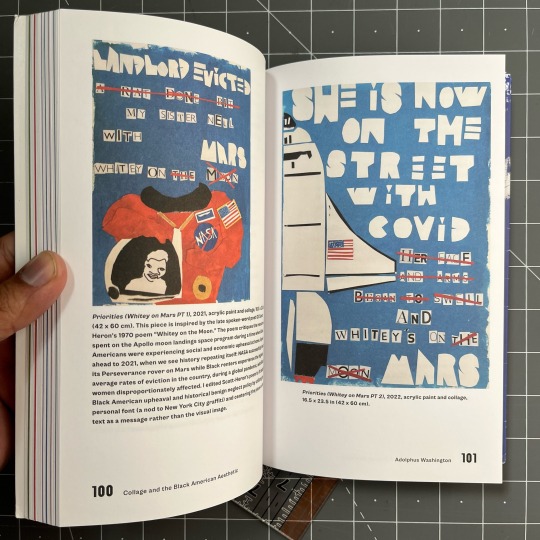
#finishedbooks Centered: People + Ideas Diversifying Design edited by Kaleena Sales. Ordered this one since one of my favorite collage artist friends @negrophonic did the cover, but beyond that really didn't know what to expect. So imagine my surprise when I start the first essay (of 12) and it on the Gee's Bend quilters. It was upon seeing one of their quilts in Minneapolis that caused such an ethereal reaction that I just had to do what I could to learn how to do it and experience the joy of creating something so beautiful that one could just wrap themselves in and thank it and the warmth in turn one receives...man. From there the essays/interviews are extremely varied from everything from Kurdish rugs and Indian truck art to the amazing ideas and work of graphic designer Saki Madndikwa and of course an interview on @negrophonics collage process and the Black American aesthetic. With that, there were so many aspects I had never heard of or simply didn't know. For example, and one that blew me away was that W.E.B. Du Bois ya know the first black PhD at Harvard/ Souls of Black Folk author...was a graphic designer with an ahead of its time skew of modernity. I ordered a book that features this W.E.B. Du Bois's Data Portraits: Visualizing Black America (review coming soon) and you will see what I mean, truss. But overall in terms of design each essay comes to a common conclusion that it is time to break away with Bauhaus and European design, i.e. Swiss grid systems, etc in favor of looking both to the past and present in non-European cultures to really enrich the medium as a whole.
0 notes
Text
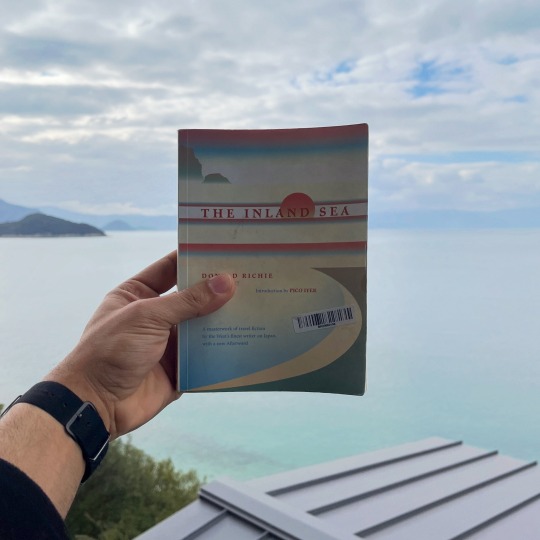
#finishedbooks The Inland Sea by Donald Richie. Ordered this exclusively for my trip to Kagawa. I really don't get out of Tokyo much but when I do I like to get some work of literature that corresponds to the place. I got Kawabata's "The Izu Dancer" for a ryokan trip to Izu peninsula or Tanazaki's "Makioka Sisters" for Kyoto back when I had a solo show there in 2012...and so it goes. Literary output is surprisingly slim in that immediate area as much reflection as the still nearly wave-less inland sea inspires. Historically it would of been somewhere around the Yayoi- Kofun period that the region would had of been of prominence some 1000 years before the Nara/Heian period where we begin to see literary output with the advent of kana syllables. So it was my favorite cultural critic on Japan's travel log I went with. As @johnsypal informed me there is a lot of overlap from "The Donald Richie Reader" sadly representing the only work on the master critic himself but the book still had so many gems most of which I was happy to read similar and this unchanged from my experience at the same of age in the same region from a similarly blue collar US area albeit 60 years apart. For myself and for what I read in Richie is a seeking of the forgotten as it still holds an unselfconscious candor that one can draw similarities. Where I feel most mourn the beauties of the dying, he of course finds the "lost" but understands it can only lie within the eye of its beholder. The result is a pragmatism that mirrors the Japan itself. The geographical disconnectedness is certainly felt containing about 3,000 islands. Richie writes, "The train passes a small boy playing with his dog in a field. The train goes through a long tunnel. It comes out. And there is another boy playing with a dog in another field. The two will never meet. A mountain lies between." A beautiful reverse haiku-like observation where one sees two aspects of the same thing...a connection certainly although hidden it is there, instead of the latter where two observations ordinarily thought incongruous join to reveal their single unity. To me haiku exists to record this apprehension of similarity that one can sense but not explain. Like Richie, I've gone to greater contexts that are always required in Japan but overwhelmingly the beauty of the area were just the people. Living here since 2006 I have never been to an area that was so generally warm sharing a sentiment Richie held 60 years prior and @lance harped on that I didn't believe till I experienced it. The difference was in the old people who all over share a general afforded directness after all the polite shufflings of youth and continuing false politeness in middle age. As an ikebana master, a medium generally reserved for middle/old age women I have a better than most experience. However, in Shikoku it was similar to what one finds in a Noh drama, where the character comes on to stage and directly tells you who they are, where they are going and why, they then spring it onto to you and from there remember you from that conversation on. As a dog owner in Tokyo experiences are hit or miss usually being absurdly told to pick up my dog's shit with a very evident bag full of my dog's shit already in hand. For someone raised by their grandparents holding tremendous respect, I am always amazed at how Tokyo old people really piss me off. Richie ends the book, "...I turned around and faced the sea. I don't care if I never go back." Many misunderstood this last line as he is actually referencing the US in favor of the Japan. We can't say the inland sea as he incidentally didn't go back for 40 years, a mistake I will not make.
0 notes






